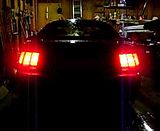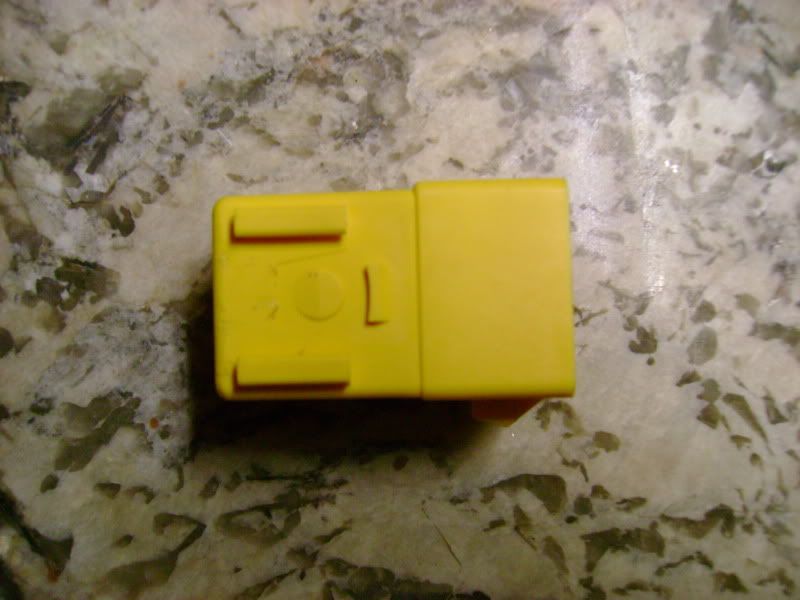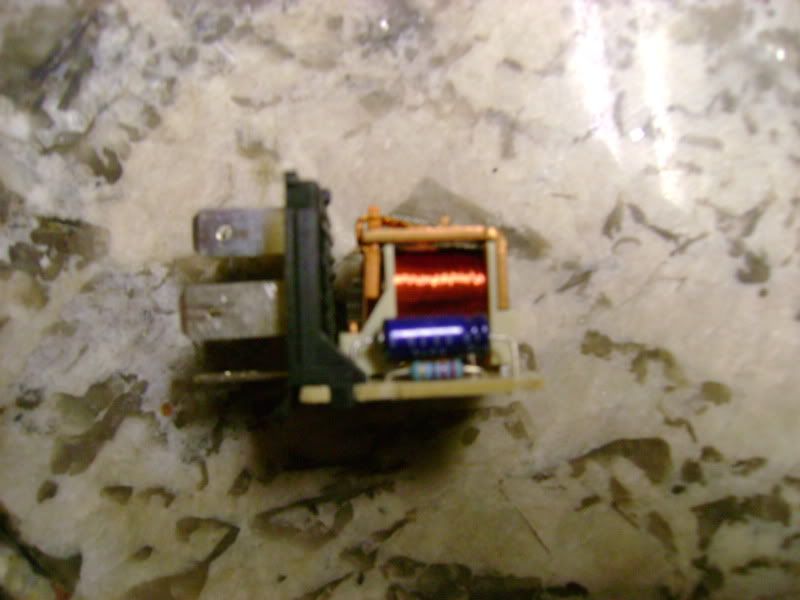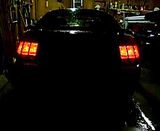Last edit by: IB Advertising
See related guides and technical advice from our community experts:
Browse all: Lighting Guides
- Ford Mustang Gt 1996 to 2004: How to Slow Down Sequential Tail Light Rate
Step by step instructions for do-it-yourself repairs
Browse all: Lighting Guides
How To: Slow Down Sequential Tail Light Rate
#21
Glad it is working for everyone else!
AM has them for $50...
http://www.americanmuscle.com/raxiom...elay-9604.html
AM has them for $50...
http://www.americanmuscle.com/raxiom...elay-9604.html
#23
I hate to dig up an old thread, but after some inquiries I'm posting a link to a post I made on another Mustang forum. It has diagrams etc. of how to build a version of the sequencers I mentioned making on the previous page. The exact sequencers I build require a PIC programmer (~$80), but if you happen to have one already they can self-time like the WebElectric ones (auto-calibrate to your flasher speed as often as you like).
The link
The link
#24
Thanks for the very excellent idea on slowing a flash rate. I am using an automotive flasher to control relays for another project, and that 80fpm automobile rate was WAY too fast. I'm using a Tridon EP-34 flasher and its 3.3uF cap is soldered tight to the board, having no leads to parallel onto, so I desoldered it and dropped in a 10uF (salvaged from the recycled boards pile). This cut my flash rate down to (I'm guessing) about 40 flashes per minute. Works Great! Thanks again.
#25
I installed the WebElectric Products sequential tail light kit for my 2004 GT and am very pleased with the product. I got the STS-1M, splice-in kit because I have experience with electronics. No soldering is required with this kit - comes with quick-splice and wire nuts. Their instructions are very straight forward with pictures, so I'm not going to explain how to install the kit here. Visit their website for install instructions...
http://www.webelectricproducts.com/
Once I installed the kit, the blinks seemed too fast and I read similar complains on the forum with no real solution. Three blinks now need to flash in the time one happened before. Here is a video of my lights before...

This does not have to do with the kit, but the actual turn signal flasher module under the dash. The stock rate is about 80 flashes per minute. I did find a modified flasher module online for $25 you can buy to slow down the rate, but my fix is for $1.19. Maybe I should modify and sell them.
*This mod requires basic knowledge of electronics and how to solder!
1) First find the turn signal flasher module. It is located under the driver's side dash above/to the right of the gas pedal. It is clipped on the medal structure of the center console. Turn on your signals and listen for it. Mine was yellow...

2) Pull it down and unplug it from the wire harness. Now you will need to get the electronics out of the case. I just used a couple small straight screwdrivers and needle nose pliers to gentle pull it out.
3) The stock flasher has a 3.3 uf capacitor. This is what determines the flash rate. The more capacitance, the slower the rate - so we need to add another capacitor.

4) All you have to do is install a 1uf electrolytic capacitor across the 3.3uf cap that's already there. That will slow it down nicely. I found a 1uf capacitor at Radio Shack for $1.19. Just take the new capacitor and place it on top the existing one. Make sure the direction of the writing matches. With it installed like this it will fit perfectly into the case.
-You could also take the 3.3uf cap out and install a higher capacitance capacitor in its place but this would require soldering directly onto the computer chip board. Not sure what number you would need either. 4.3uf?
5) Cut the leads to the proper length so you can wrap the 1 cap leads carefully around the leads of the 3.3 cap a time or two with a small pair of pliers. Make sure the leads are not touching any wires or metal! After you are happy with how it is mounted, just solder the leads together. Should look like this...

6) Push the module back into the yellow case, plug it back in, slide it onto the mount under the dash and enjoy your new flash rate. I think it makes the modification way more noticeable. It now flashes about 62 times per minute...

*This will also slow down the front turn signal rate and the rate at which the first sequence of the brake light application comes on. I tested it and still seems safe - use your own judgment on this.
I would like to thank Lawrence from WebElectric Products for the quality kit and for answering my questions about this modification. He responded to my emails very fast and told me which capacitor I would need. Thanks again!
http://www.webelectricproducts.com/
Once I installed the kit, the blinks seemed too fast and I read similar complains on the forum with no real solution. Three blinks now need to flash in the time one happened before. Here is a video of my lights before...

This does not have to do with the kit, but the actual turn signal flasher module under the dash. The stock rate is about 80 flashes per minute. I did find a modified flasher module online for $25 you can buy to slow down the rate, but my fix is for $1.19. Maybe I should modify and sell them.

*This mod requires basic knowledge of electronics and how to solder!
1) First find the turn signal flasher module. It is located under the driver's side dash above/to the right of the gas pedal. It is clipped on the medal structure of the center console. Turn on your signals and listen for it. Mine was yellow...

2) Pull it down and unplug it from the wire harness. Now you will need to get the electronics out of the case. I just used a couple small straight screwdrivers and needle nose pliers to gentle pull it out.
3) The stock flasher has a 3.3 uf capacitor. This is what determines the flash rate. The more capacitance, the slower the rate - so we need to add another capacitor.

4) All you have to do is install a 1uf electrolytic capacitor across the 3.3uf cap that's already there. That will slow it down nicely. I found a 1uf capacitor at Radio Shack for $1.19. Just take the new capacitor and place it on top the existing one. Make sure the direction of the writing matches. With it installed like this it will fit perfectly into the case.
-You could also take the 3.3uf cap out and install a higher capacitance capacitor in its place but this would require soldering directly onto the computer chip board. Not sure what number you would need either. 4.3uf?
5) Cut the leads to the proper length so you can wrap the 1 cap leads carefully around the leads of the 3.3 cap a time or two with a small pair of pliers. Make sure the leads are not touching any wires or metal! After you are happy with how it is mounted, just solder the leads together. Should look like this...

6) Push the module back into the yellow case, plug it back in, slide it onto the mount under the dash and enjoy your new flash rate. I think it makes the modification way more noticeable. It now flashes about 62 times per minute...

*This will also slow down the front turn signal rate and the rate at which the first sequence of the brake light application comes on. I tested it and still seems safe - use your own judgment on this.
I would like to thank Lawrence from WebElectric Products for the quality kit and for answering my questions about this modification. He responded to my emails very fast and told me which capacitor I would need. Thanks again!
#26
Ed,
No, it does not matter. The capacitor just has to be rated for *at least* the voltage it will take (more than 12V car voltage, 25v or 50v are the next common values) and the same capacitance. The reason it is electrolytic is because ceramic capacitors don't have that kind of capacity at that size. Axial vs. Radial just describes how the leads come out of the capacitor, so it makes no difference. Good luck!
No, it does not matter. The capacitor just has to be rated for *at least* the voltage it will take (more than 12V car voltage, 25v or 50v are the next common values) and the same capacitance. The reason it is electrolytic is because ceramic capacitors don't have that kind of capacity at that size. Axial vs. Radial just describes how the leads come out of the capacitor, so it makes no difference. Good luck!
#27
Ed,
No, it does not matter. The capacitor just has to be rated for *at least* the voltage it will take (more than 12V car voltage, 25v or 50v are the next common values) and the same capacitance. The reason it is electrolytic is because ceramic capacitors don't have that kind of capacity at that size. Axial vs. Radial just describes how the leads come out of the capacitor, so it makes no difference. Good luck!
No, it does not matter. The capacitor just has to be rated for *at least* the voltage it will take (more than 12V car voltage, 25v or 50v are the next common values) and the same capacitance. The reason it is electrolytic is because ceramic capacitors don't have that kind of capacity at that size. Axial vs. Radial just describes how the leads come out of the capacitor, so it makes no difference. Good luck!
#28
Ed,
No, it does not matter. The capacitor just has to be rated for *at least* the voltage it will take (more than 12V car voltage, 25v or 50v are the next common values) and the same capacitance. The reason it is electrolytic is because ceramic capacitors don't have that kind of capacity at that size. Axial vs. Radial just describes how the leads come out of the capacitor, so it makes no difference. Good luck!
No, it does not matter. The capacitor just has to be rated for *at least* the voltage it will take (more than 12V car voltage, 25v or 50v are the next common values) and the same capacitance. The reason it is electrolytic is because ceramic capacitors don't have that kind of capacity at that size. Axial vs. Radial just describes how the leads come out of the capacitor, so it makes no difference. Good luck!
Thread
Thread Starter
Forum
Replies
Last Post
jwog666
Pipes, Boost & Juice
11
12-27-2021 08:09 PM
MustangForums Editor
Mustang News, Concepts, Rumors & Discussion
0
09-25-2015 09:06 AM





